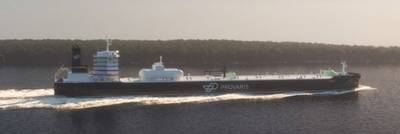RED II Compliance Demonstrated for Potential Compressed Hydrogen Supply Chain
Provaris Energy has released preliminary results for meeting Europe’s Renewable Energy Directive II (RED II) emissions standards for its bulk hydrogen shipping concept based on its proprietary H2Neo carrier sailing between Norway and Germany.
Implemented in December 2018, RED II sets stringent emissions standards aimed at fostering the use of renewable energy sources and reducing greenhouse gas emissions across the European Union. RED II mandates that by 2030, at least 32% of the EU's energy consumption must come from renewable sources.
A key component of RED II is its requirement for the lifecycle greenhouse gas emissions of biofuels, bioliquids and biomass fuels to be significantly lower than the fossil fuel alternatives they replace. Specifically, for hydrogen production, the emission threshold is set at 28.2 grams of CO2 equivalent per megajoule (g CO2e/MJ) of hydrogen.
Wärtsilä supported the Provaris analysis with a proposal for alternative propulsion plant configurations, together with Provaris’ own analysis on fuel consumption and carbon emissions - over a range of sailing speeds and fuel types.
Provaris estimated emission levels of 7.6 g CO2e/ MJ H2 at a typical sailing speed of 13 knots for the 1,600 nautical mile roundtrip between Norway and Germany.
The estimated emissions were based on a proposed hybrid electric propulsion plant with modern 4-stroke LNG Dual Fuel generating sets. Wärtsilä also modelled a potential future scenario involving the integration of a 3,000kW hydrogen fuel cell into the propulsion plant which would further reduce emissions by 20 to 30%, depending on the operating profile.
Provaris Chief Technical Officer, Per Roed, commented: “The hybrid electric propulsion system developed with Wärtsilä provides a highly efficient solution today while ensuring a maximum level of flexibility to introduce alternative fuels and new technologies such as fuel cells in the future."















